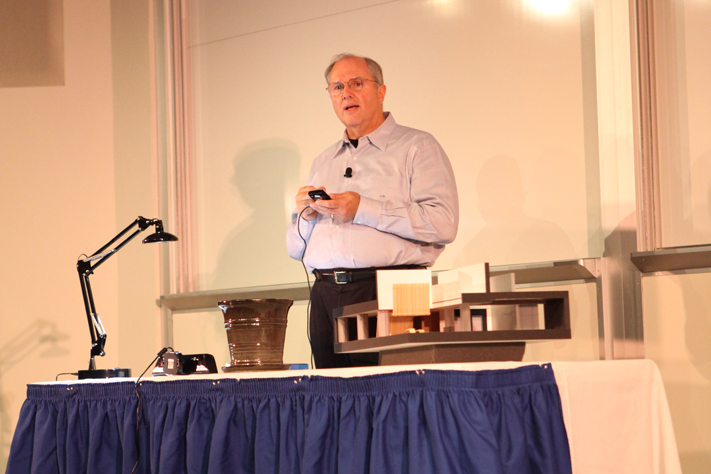On Oct. 27, Craig Mundie, Chief Research and Strategy Officer of Microsoft Corporation held a presentation on the topic “Converging Worlds: The New Era in Computing” that focused on how new technologies can be utilized to solve some of the world’s most complex challenges.
Mundie discussed the fundamental transformation in how humans interact with computers, the merging of the physical and digital worlds and the capabilities of the present era of computing powered by insights from “Big Data” and more natural user interfaces.
He also talked about the reliance of science, engineering and all related fields on the advancement of information technology. He held demonstrations on the ability to use information to gain insight from very large amounts of data available to people.
According to Mundie, the existence of “Big Data” is a result of the evolution of science and engineering over time that has led to increase in storage and computational capabilities that allows users to attain data through observation.
He provided an example of an Excel spreadsheet that serves as a repository without any limitations to size and the amount of data collected. These capabilities are called data markets and large datasets can be put into these “cloud” facilities. They represent a place where computer systems that are bigger than what governments have built in the past are now accessible to everyone.
Mundie explained how Microsoft has focused on building facilities that allow users to attain more information and help people perform tasks without numerical information. He provided an example of medical research activities where 3D models of torsos made it clear to laypeople where organs of the body were situated and allowed professionals to highlight certain organs with problems and manipulate them by examining them individually or in context. Mundie discussed the convergence of the physical and virtual world by explaining how it is not difficult for people to make the transition from the physical to the virtual world using devices that they normally use like the cell phone. He also introduced the concept of Microsoft Tag to those in attendance. These tags can be scanned to provide information or particular features of a product. When people scan them, tags can redirect them to a website, show a video, download an application or add a contact list to their address book. He explained a transition from graphical user interfaces of touching, clicking and pointing towards more natural user interfaces or NUI that can detect human senses with the help of computer abilities.
“As you move more and more into natural user interfaces, the really high intensity computing and low latency can all be computed locally…Hold a button down and talk to [your phone]. You can dial, send text messages, get movies and perform web searches,” Mundie said.
He explained how, in order to make it simpler for people to move into a phase of physical-virtual interaction, it was necessary to find a way to get the 3D environment into their environment. He talked about the concept of Avatar Kinect that contains an array of sensors that translate user’s physical gestures into on-screen actions. Two people can be present miles apart but can use their avatars to meet and mimic their actions and gestures in a virtual space. Mundie talked about an avatar-based interview with CNBC in which his avatar explained about the launch of the Avatar Kinect in a virtual space, sensing his exact actions, gestures and words without Mundie being physically present at the interview. He explained that business applications of these technologies are on the rise across the globe.
“We operate in a highly dynamic industry…I tell people that there’s three reasons for research, one is that we need to continue to improve [technologies] in dramatic ways…the second reason is that over the years we add new businesses and many times when you want to enter a new business you have to find something to distinguish yourself…The third is that I think of it[research] as a big shock absorber…Our research capacity has given us a buffering capability,” Mundie said.
